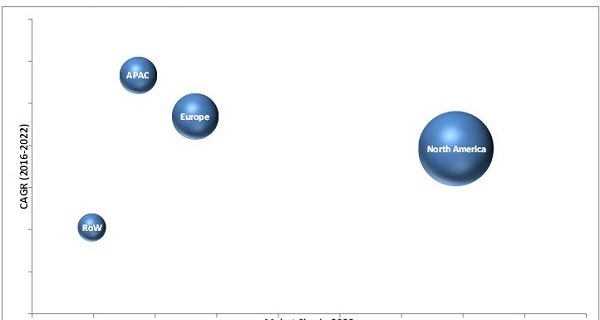
The Digital Radio Frequency Memory (DRFM) Market is projected to grow from USD 613.9 Million in 2016 to USD 1,222.2 Million by 2022, at a CAGR of 12.16% during the forecast period. The base year considered for the study is 2015 and the forecast period is from 2016 to 2022.
Browse 70 market data tables and 48 figures spread through 136 pages and in-depth TOC on “Digital Radio Frequency Memory (DRFM) Market by Platform (Defense, Commercial & Civil), Application (Electronic Warfare, Radar Test & Evaluation, Electronic Warfare Training), Architecture (Processor, Modulator, Converter, Memory) – Global Forecast to 2022”
https://www.marketsandmarkets.com/Market-Reports/drfm-market-5581016.html
Early buyers will receive 10% customization on this report.
Target Audience
- Armed Forces (Air Force, Army, and Navy)
- Defense Research Institutes
- Government Telecommunication Authorities
- Manufacturers of Electronic Jammers
- Original Equipment Manufacturers (OEMs)
- System-on-Chip Electronic Component Suppliers
The electronic warfare segment is projected to lead the Digital Radio Frequency Memory (DRFM) market during the forecast period
On the basis of application, the Digital Radio Frequency Memory (DRFM) market has been segmented into electronic warfare, radar test & evaluation, electronic warfare training, and radio & cellular network jamming. The electronic warfare segment accounted for the largest share of the Digital Radio Frequency Memory (DRFM) market in 2016. Electronic warfare uses control over electromagnetic spectrum to disrupt enemy electronic systems. The use of DRFM systems in jammers has improved the capability of electronic warfare systems. These systems can store and modify signals, before transmitting them to enemy radars. Electronic warfare systems use different deception techniques, such as multiple false target generation, Range Gate Pull-Off (RGPO), and Velocity Gate Pull-Off (VGPO), among others. DRFM-based systems are used for Signals Intelligence (SIGINT) and Communications Intelligence (COMINT) missions to capture the electromagnetic signatures of enemy aircraft, ships, and other units. These electromagnetic signatures can provide intelligence about the capabilities of enemy ships and types of electronic systems in operation.
Download PDF Brochure @
https://www.marketsandmarkets.com/pdfdownloadNew.asp?id=5581016
The processor segment is projected to grow at the highest CAGR during the forecast period
On the basis of architecture, the Digital Radio Frequency Memory (DRFM) market has been segmented into processor, modulator, converter, memory, and other components. DRFM systems use various microprocessors, memory blocks, and other components that are embedded on their integrated circuits. The integrated circuit processors in DRFM systems are commonly known as System-on-Chip (SOC). Specific Application Programmable Logic Devices SOCs are programmed using the Hardware Description Language (HDL), such as Verilog or VHDL. The use of Application Specific Integrated Circuit (ASIC) in DRFM systems has offered various advantages, such as low power consumption and faster operation. However, new DRFM systems are using FPGAs over ASICs, as FPGAs have low operating cost and offers re-programmability. Xilinx Virtex-5 is a type of FPGA that is commonly used in DRFM systems.
North America is projected to be the largest market for Digital Radio Frequency Memory (DRFM)
North America accounted for the largest share of the Digital Radio Frequency Memory (DRFM) market in 2016, followed by Europe. The growth of the DRFM market in North America is mainly attributed to the increasing investments made by defense forces for the development of technologically advanced DRFM systems. There are various well-established and prominent DRFM manufacturers in this region. Leading market players in North America include Northrop Grumman Corporation (U.S.) and Raytheon Company (U.S.).
Key Market Players:
Key players operating in the Digital Radio Frequency Memory (DRFM) Market include Airbus Group (Netherlands), Northrop Grumman Corporation (U.S.), Raytheon Company (U.S.), Elbit Systems Ltd. (Israel), and BAE Systems plc (U.S.), among others.